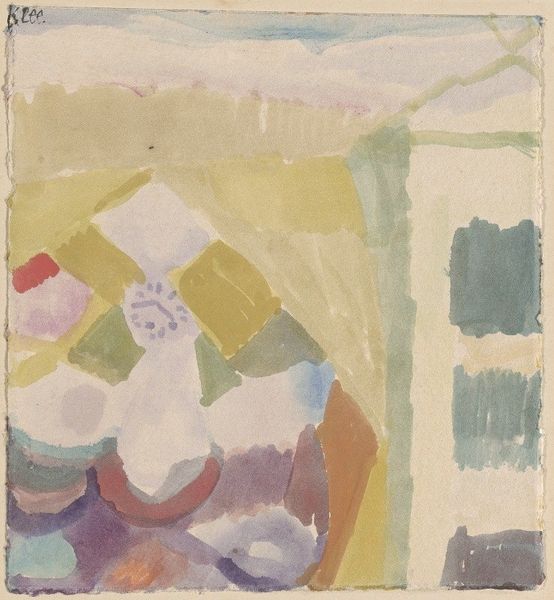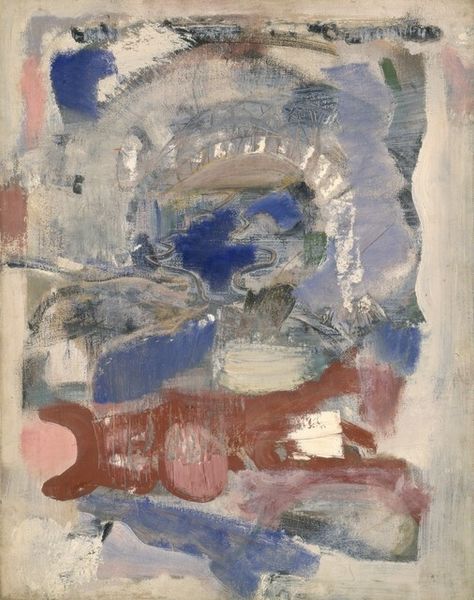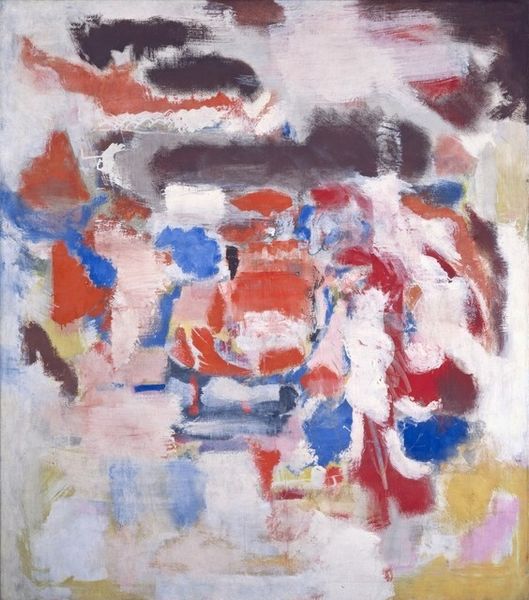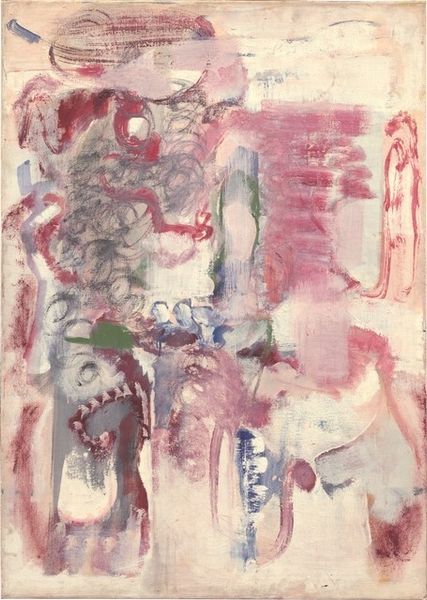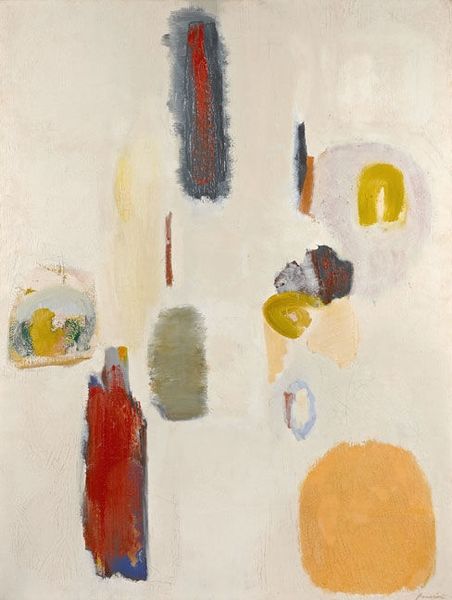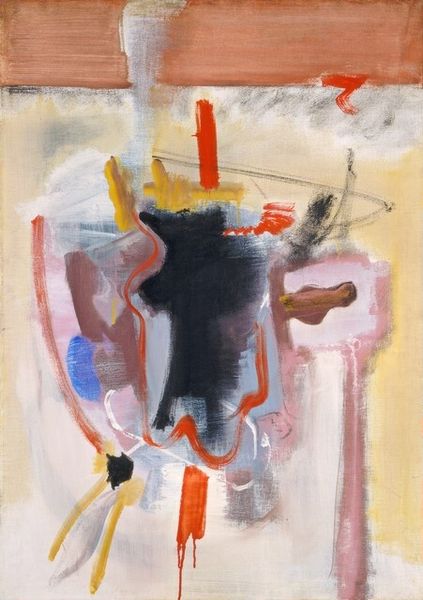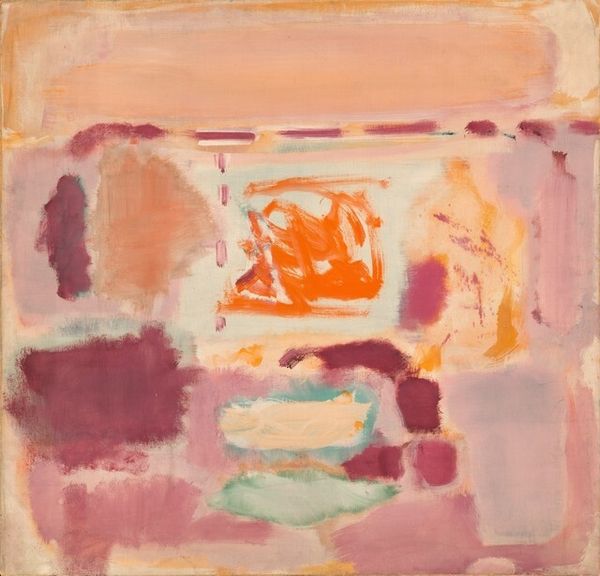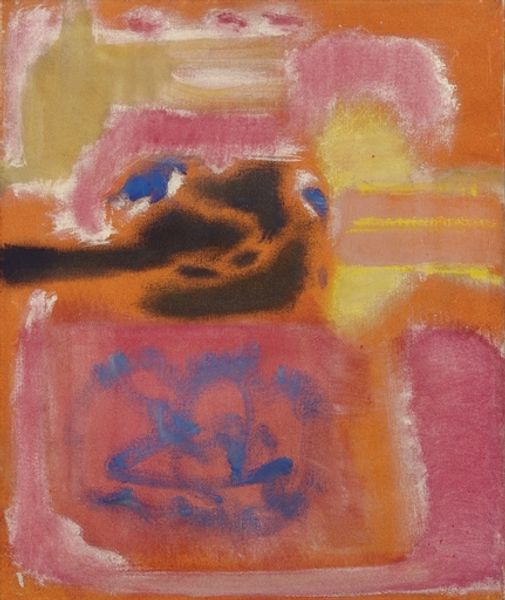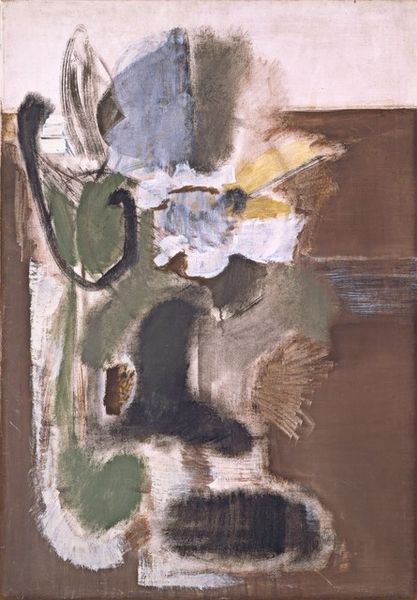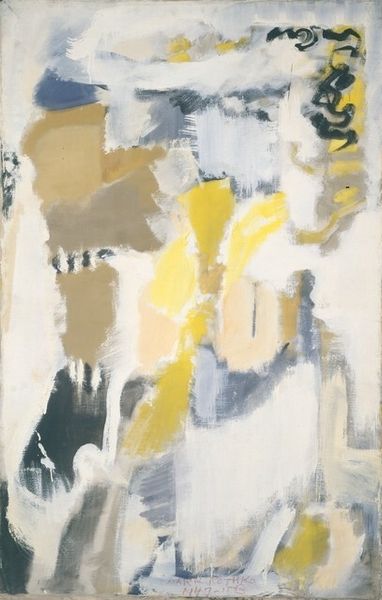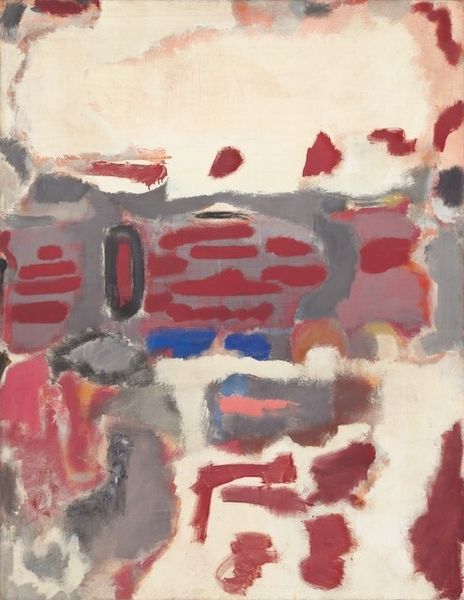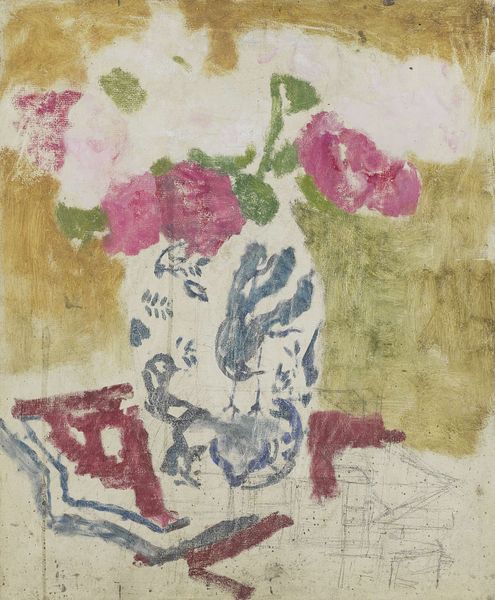
painting, oil-paint
#
abstract-expressionism
#
painting
#
oil-paint
#
form
#
oil painting
#
abstraction
Dimensions: overall: 98.1 x 80 cm (38 5/8 x 31 1/2 in.)
Copyright: National Gallery of Art: CC0 1.0
Editor: This is an "Untitled" oil painting by Mark Rothko, created in 1946. Looking at it, I'm struck by its pastel color palette. It feels almost whimsical, despite the blocks of color. What can you tell me about how this painting fits into the art world of its time? Curator: Rothko's "Untitled" emerges from a fascinating period of art history. Post-World War II, artists grappled with expressing profound emotion through abstraction. Consider the cultural climate: trauma, existentialism, and a search for new meaning were all potent influences. Rothko, alongside figures like Pollock and de Kooning, sought to move beyond representational art. Editor: So, it was a reaction to everything that was happening, not just an aesthetic choice? Curator: Precisely! Museums and galleries began to champion this new form of expression, shaping its reception. Think about the Museum of Modern Art's role in legitimizing abstract expressionism. These institutions elevated artists like Rothko, turning their intensely personal visions into objects of public consumption. How does knowing this affect your perception of the artwork's "whimsical" quality? Editor: It makes it feel… heavier, maybe? The bright colors now seem like a contrast to the depth of the emotions that influenced its creation. It feels much more deliberate. Curator: The politics of imagery are vital here. By eschewing recognizable figures, Rothko invited viewers to engage directly with color and form, fostering subjective interpretations. Museums amplify this dialogue, mediating our understanding and potentially influencing how we assign value to art and interpret history through them. Editor: It’s amazing how much the context changes how you see a painting! Curator: Exactly. Hopefully it encouraged a look beyond pure aesthetics, connecting this piece to broader societal narratives.
Comments
No comments
Be the first to comment and join the conversation on the ultimate creative platform.
